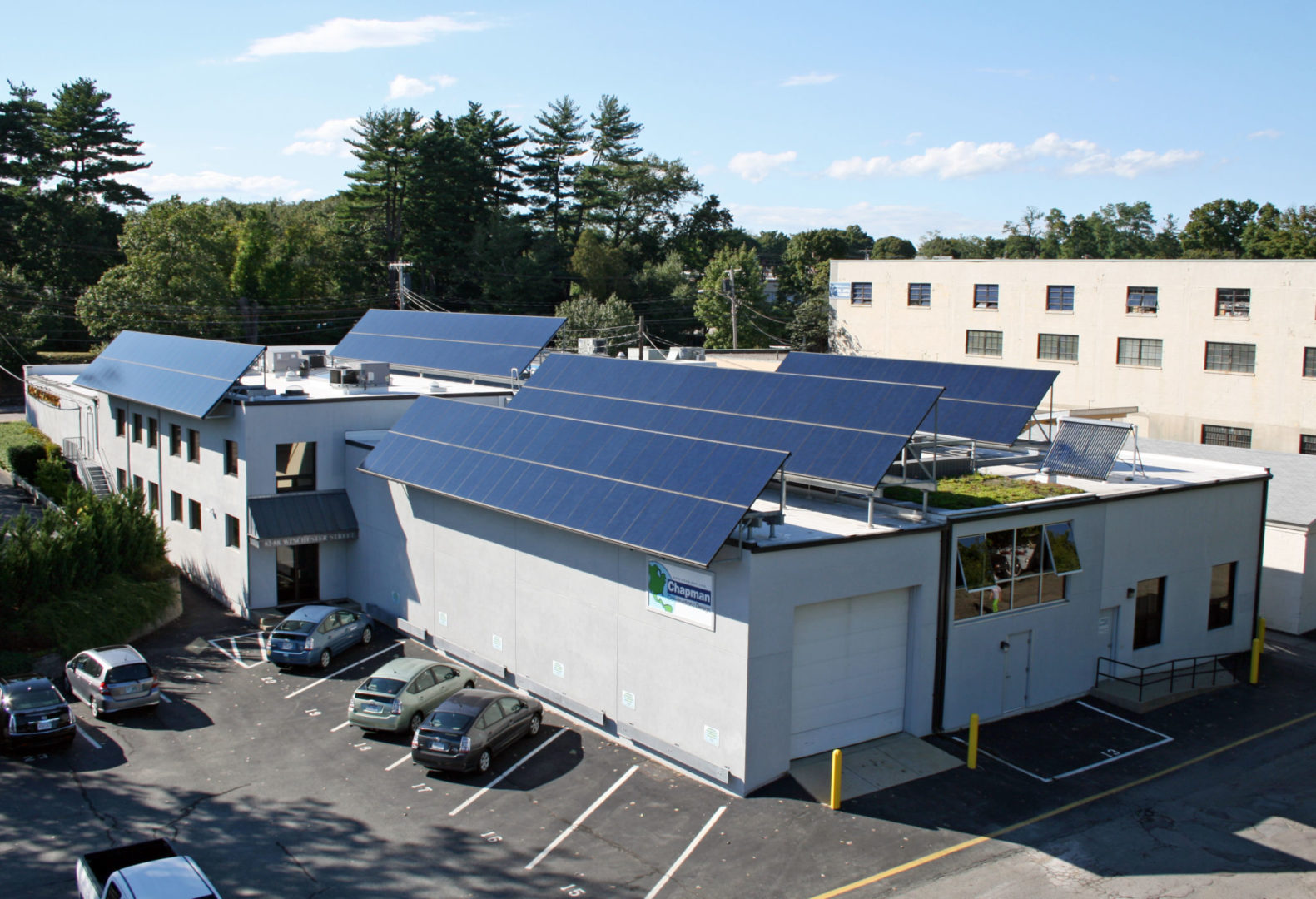Chapman is acting as designer, green consultant, and construction manager for the renovation of its Newton headquarters. Chapman is using the renovation to further its employees’ understanding of green construction and the LEED Commercial Interiors Green Building Rating System. Chapman is seeking the highest LEED certification level for the renovation at 84 Winchester Street. The LEED rating system provides a standard for what constitutes a “green building.”
“The project is the perfect training ground for our employees,” Chapman President John Hall, a LEED Accredited Professional, said. “It allows them to put into practice what they learned in company-sponsored seminars and study groups that prepared them for the LEED AP exam,” Hall said. Twenty percent of the company’s employees have earned the designation.
“Designing the space ourselves and working in what has become for us a learning lab of sorts has deepened our understanding of LEED requirements and green construction and will be a huge benefit to our clients,” Hall said.
Chapman’s build-out will continue to be a learning lab even after construction when it will open its offices to the public and tours of the facility. Those tours will show visitors the green strategies and products Chapman used in the renovation. First among those strategies was Chapman’s reuse of existing interior non-structural components for LEED Materials & Resources Credit 1.2. Among the green products the tours will showcase are Kohler automatic, low-flow faucets, dualflush toilets, and waterless urinals that will cut Chapman’s water use in half, far exceeding the 30% reduction required for Water Efficiency Credit 1.2, and XLerator hand dryers that will eliminate paper towel waste, saving money and resources.
Perhaps the most visible facet of Chapman’s 12,000-square-foot renovation will be the installation of a 43 kW photovoltaic (PV) array that will generate enough power to meet all of Chapman’s electrical needs. The firm has received a grant from the Massachusetts Technology Collaborative (MTC) for the PVs, which satisfy LEED Sustainable Sites Credit Option 1K: Onsite Renewable Energy. Chapman also will seek an Innovation in Design credit for the array, which shades south-facing windows, reducing air conditioning during the summer.
A roof-top observation deck will allow visitors to view the photovoltaic panels as well as a variety of green roofing strategies including white membrane and vegetated roofs, which fulfill LEED Sustainable Sites Credit Option 1E: Heat Island Reduction. Heat islands, caused by dark non-reflective surfaces, artificially elevate temperatures in urban areas, adding to cooling loads and power consumption.
The PV system’s electrical output will be displayed live on Chapman’s website as well as on a monitor in the firm’s redesigned lobby, which will feature green finishes including low VOC paints for Indoor Environmental Quality Credit 4.2: Low-Emitting Materials, Paints and Coatings, cork flooring for Materials & Resources Credit 6: Rapidly Renewable Materials, and furnishings and casework constructed only of low-emitting materials, contributing to IEQ credits 4.4 and 4.5.
Chapman’s office renovation is its second LEED project. The first, Project Hope, a four-story community center, achieved Silver certification and was the first LEED-certified building in Roxbury.
published 02.21.2008


